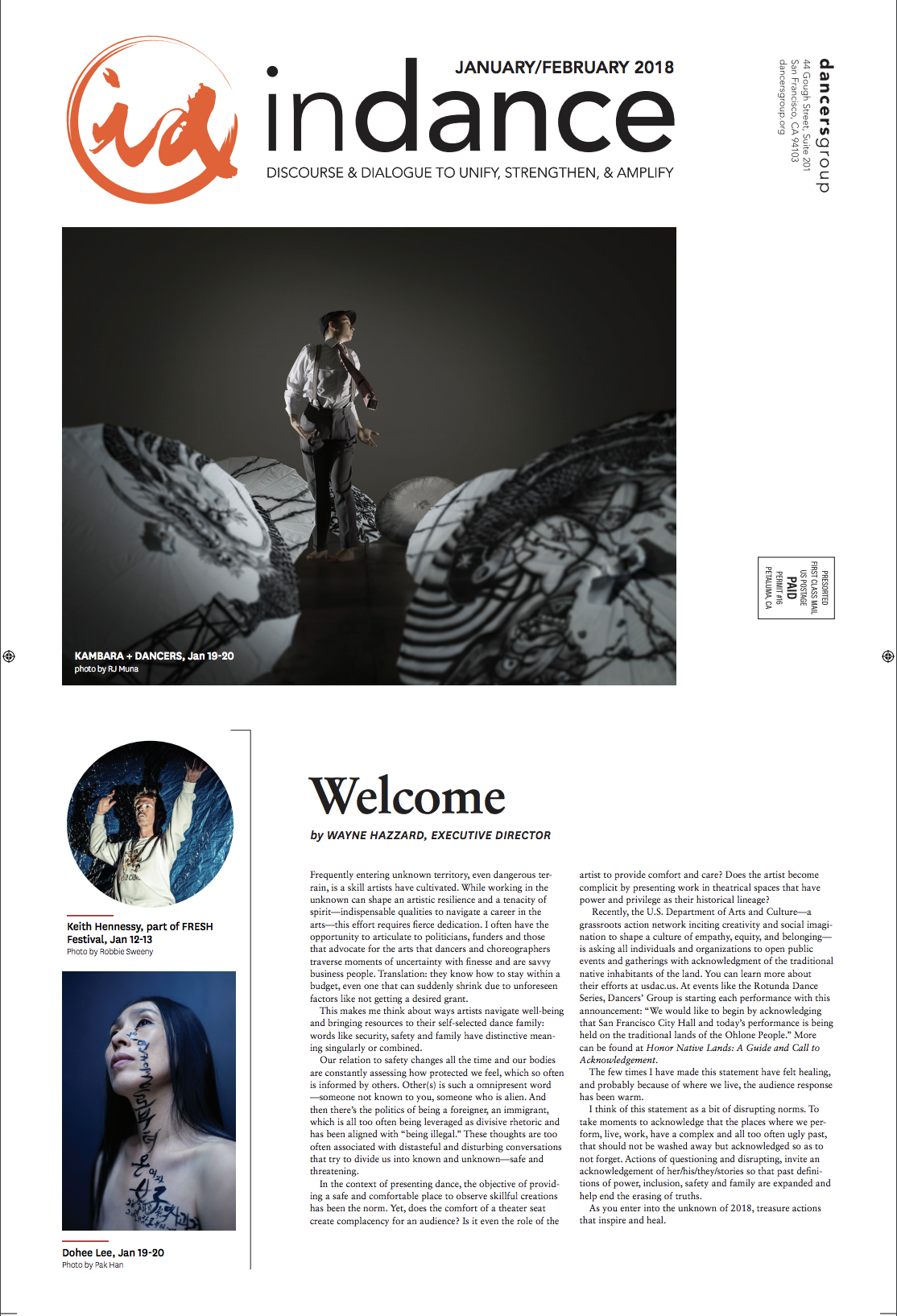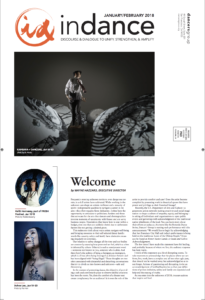
 Frequently entering unknown territory, even dangerous terrain, is a skill artists have cultivated. While working in the unknown can shape an artistic resilience and a tenacity of spirit—indispensable qualities to navigate a career in the arts—this effort requires fierce dedication. I often have the opportunity to articulate to politicians, funders and those that advocate for the arts that dancers and choreographers traverse moments of uncertainty with finesse and are savvy business people. Translation: they know how to stay within a budget, even one that can suddenly shrink due to unforeseen factors like not getting a desired grant.
Frequently entering unknown territory, even dangerous terrain, is a skill artists have cultivated. While working in the unknown can shape an artistic resilience and a tenacity of spirit—indispensable qualities to navigate a career in the arts—this effort requires fierce dedication. I often have the opportunity to articulate to politicians, funders and those that advocate for the arts that dancers and choreographers traverse moments of uncertainty with finesse and are savvy business people. Translation: they know how to stay within a budget, even one that can suddenly shrink due to unforeseen factors like not getting a desired grant.
This makes me think about ways artists navigate well-being and bringing resources to their self-selected dance family: words like security, safety and family have distinctive meaning singularly or combined.
Our relation to safety changes all the time and our bodies are constantly assessing how protected we feel, which so often is informed by others. Other(s) is such a omnipresent word —someone not known to you, someone who is alien. And then there’s the politics of being a foreigner, an immigrant, which is all too often being leveraged as divisive rhetoric and has been aligned with “being illegal.” These thoughts are too often associated with distasteful and disturbing conversations that try to divide us into known and unknown—safe and threatening.
In the context of presenting dance, the objective of providing a safe and comfortable place to observe skillful creations has been the norm. Yet, does the comfort of a theater seat create complacency for an audience? Is it even the role of the artist to provide comfort and care? Does the artist become complicit by presenting work in theatrical spaces that have power and privilege as their historical lineage?
Recently, the U.S. Department of Arts and Culture—a grassroots action network inciting creativity and social imagination to shape a culture of empathy, equity, and belonging—is asking all individuals and organizations to open public events and gatherings with acknowledgment of the traditional native inhabitants of the land. You can learn more about their efforts at usdac.us. At events like the Rotunda Dance Series, Dancers’ Group is starting each performance with this announcement: “We would like to begin by acknowledging that San Francisco City Hall and today’s performance is being held on the traditional lands of the Ohlone People.” More can be found at Honor Native Lands: A Guide and Call to Acknowledgement.
The few times I have made this statement have felt healing, and probably because of where we live, the audience response has been warm.
I think of this statement as a bit of disrupting norms. To take moments to acknowledge that the places where we perform, live, work, have a complex and all too often ugly past, that should not be washed away but acknowledged so as to not forget. Actions of questioning and disrupting, invite an acknowledgement of her/his/they/stories so that past definitions of power, inclusion, safety and family are expanded and help end the erasing of truths.
As you enter into the unknown of 2018, treasure actions that inspire and heal.
This article appeared in the January/February 2018 edition of In Dance.


